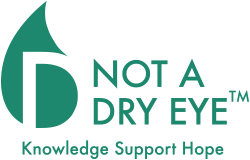Value-based care, a new buzzword describing mechanisms to reduce the costs of healthcare, is something many of us are already all too familiar with.
Consider this hypothetical cost-cutting scenario described by a health policy expert:
If a patient says he would like an MRI performed, the physician can refer to the list of recommendations and explain that there is insufficient evidence to suggest an MRI is necessary at this time. The physician may then suggest lower-tech interventions such as physical therapy or over-the-counter pain relievers.
In our opinion, the policy expert has fundamentally missed the point. The patient asking for an MRI isn’t asking for intervention. The patient is asking for a diagnosis. Neither physical therapy nor pain relievers are a diagnosis.
Are doctors really going to be willing to take this “value-based” approach?
Sadly, for many Dry Eye patients, this fundamental first step, the right diagnosis for Dry Eye symptoms, is often skipped.
The Right Diagnosis for Dry Eye Symptoms
We don’t know why exactly but suspect that it may be due to the fact that many (most?) ophthalmologists are following the “preferred practice pattern” guidelines promoted by their accrediting body, the American Academy of Ophthalmology. Unfortunately for these doctors and for us, the guideline is outdated, reducing the likelihood that we’ll be diagnosed properly. And then we’re all given the same standard treatments appropriate perhaps for only mild cases (lubricating drops, warm compresses, lid wipes) and Restasis.
But if we don’t respond to these standard treatments, our symptoms are labeled phantom, psychosomatic, secondary to depression, or neurological in nature.
Instead, doctors should examine each of us thoroughly as individuals, not as populations, and then address each diagnosed co-morbidity with targeted treatments, the way some doctors do.
That would be real value-based care, care based on a specific patient’s needs, starting with a right diagnosis.
Reference
An ethical basis for moving from volume to value
E. L. May
Healthcare Executive
2015 Jan-Feb;31(1):28
Subscribe to our blog to keep up with Not A Dry Eye.
Support Not A Dry Eye Foundation by shopping on Amazon. When you shop at smile.amazon.com, Amazon donates 0.5% of your purchase.

